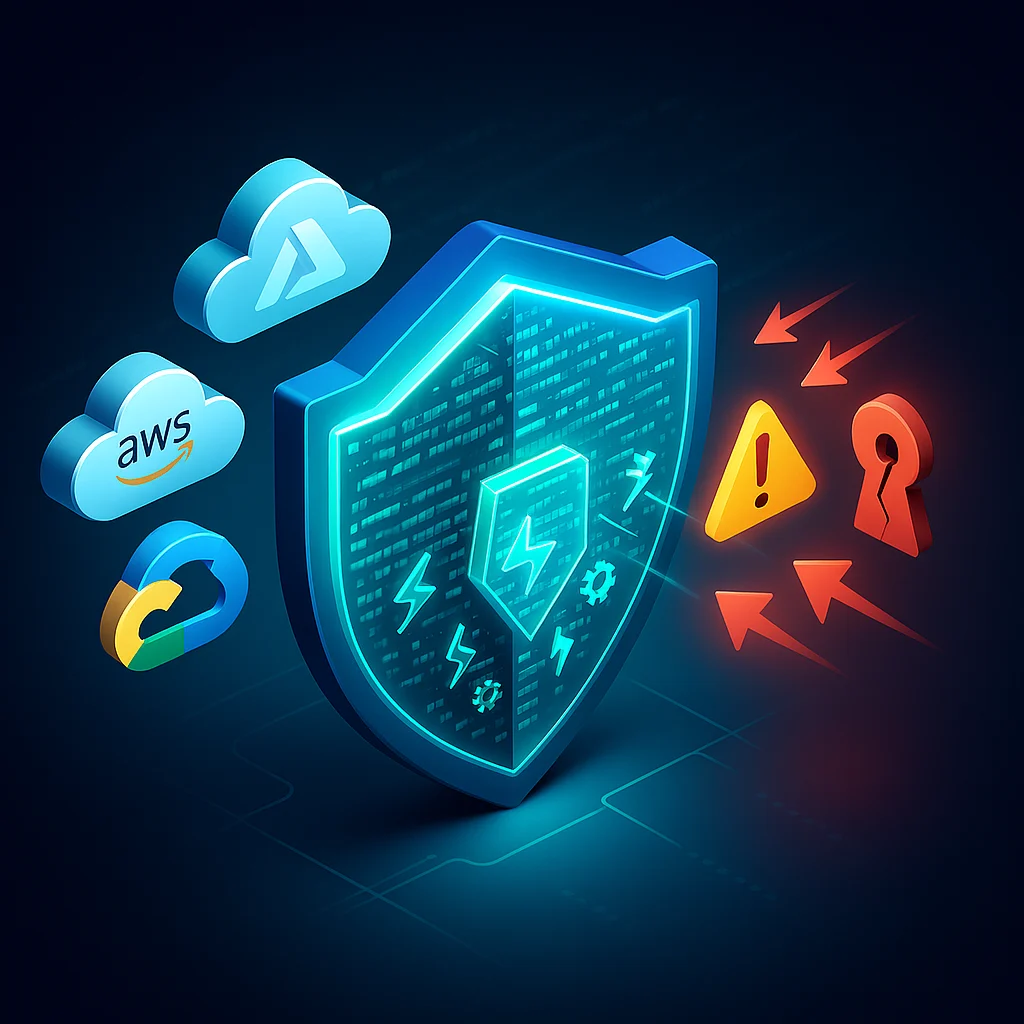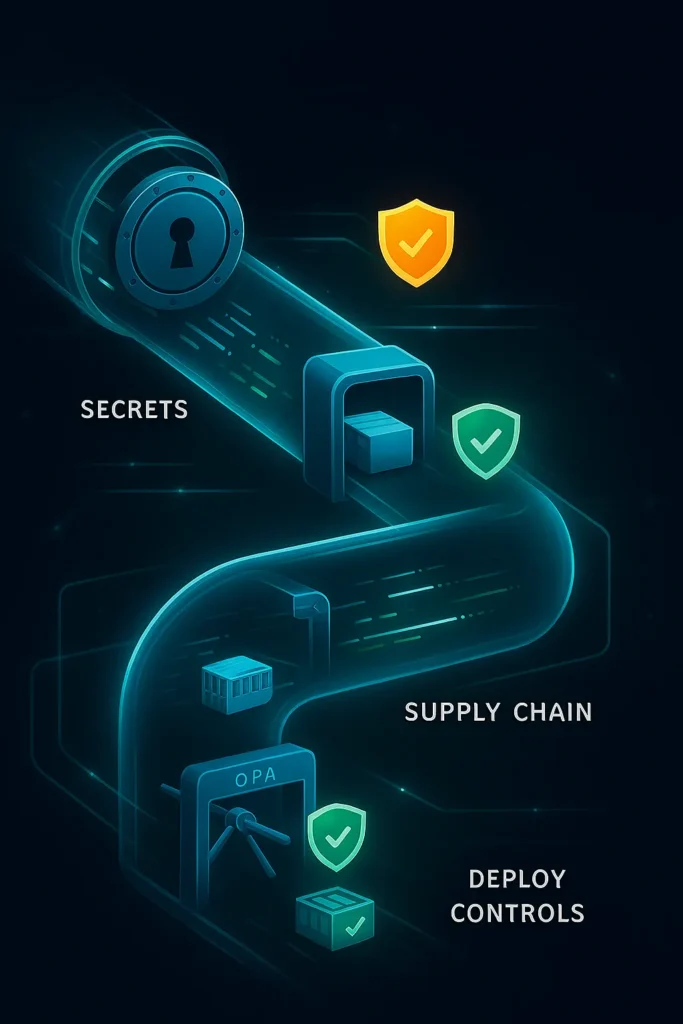Securing Serverless Functions
Security should move at the speed of your pipeline. Serverless computing accelerates development by removing infrastructure management, but it also introduces new attack surfaces. Functions run with high privilege by default, generate ephemeral logs, and depend heavily on third-party triggers.
This guide explains the security challenges of serverless functions, compares AWS, Azure, and GCP features, and provides practical hardening and monitoring tips for DevSecOps teams.
Why Serverless Functions Need Extra Security

Serverless functions shift responsibility: the cloud provider secures the runtime, while you secure the code, configuration, and access controls. Risks often include:
Over-privileged IAM roles attached to functions.
Event injection attacks through API Gateway, storage events, or queues.
Insecure dependencies from unvetted packages.
Blind spots in monitoring due to ephemeral function execution.
In regulated industries, misconfigured serverless can mean compliance violations under GDPR, HIPAA, or PCI DSS.
Core Security Challenges in Serverless Functions
1. Identity & Access Management (IAM) Scope
- Risk: Functions often get broad permissions (e.g.,
*:*in AWS IAM). - Impact: A compromised function can access unrelated services.
- Control: Apply least privilege IAM roles — AWS Lambda execution roles, Azure Managed Identities, GCP Service Accounts.
2. Dependency & Supply Chain Risks
- Risk: Functions pull open-source libraries at build time.
- Impact: Vulnerable or malicious packages introduce RCE risk.
- Control: Scan dependencies with Snyk, Trivy, or CodeQL before deployment.
3. Injection & Event Risks
- Risk: Functions are triggered by external events (HTTP, queues, storage).
- Impact: Attackers exploit weak validation to inject payloads.
- Control: Validate all inputs, sanitize headers, and apply WAF/API Gateway protections.
4. Secrets Management
- Risk: Hardcoding API keys in environment variables.
- Impact: Keys exposed via logs or compromised functions.
- Control: Use AWS Secrets Manager, Azure Key Vault, or GCP Secret Manager. Rotate regularly.
5. Observability & Forensics
- Risk: Functions are short-lived; traditional host monitoring doesn’t apply.
- Impact: Attacks may go undetected without tailored logging.
- Control: Centralize logs (CloudWatch, Azure Monitor, Cloud Logging) and stream to SIEM.
Hardening Serverless Functions Security
Enforce Least Privilege
- Map one IAM role per function.
- Deny wildcard permissions.
- Audit IAM policies with Access Analyzer (AWS) or Cloud IAM Policy Analyzer (GCP).
Secure Code & Dependencies
- Pin versions and verify signatures.
- Use IaC scanning for deployment templates (Terraform, ARM, CloudFormation).
- Apply CI/CD checks for vulnerabilities.
Strengthen Networking & Isolation
- Place sensitive functions in private subnets with controlled egress.
- Use VPC Service Endpoints to restrict access to internal services.
- Apply API Gateway throttling and authentication for external triggers.
Protect Secrets
- Fetch secrets on execution, not at build.
- Enable encryption at rest (KMS, Key Vault, Cloud KMS).
- Rotate keys on a set schedule.
Enable Monitoring & Alerts
- Enable CloudTrail, Azure Activity Logs, and GCP Audit Logs for function access.
- Detect anomalies: excessive invocation, privilege escalation attempts.
- Integrate with SIEM (Splunk, ELK, Sentinel, Chronicle) for real-time alerting.
Provider-Specific Serverless Functions Security Features
AWS Lambda
- IAM Execution Roles for least privilege.
- Lambda Layers for vetted dependencies.
- VPC integration for private subnets.
Azure Functions
- Managed Identities instead of keys.
- Application Insights for telemetry.
- Azure Key Vault for secure secret access.
GCP Cloud Functions
- Service Accounts with scoped roles.
- Cloud Armor to protect HTTP endpoints.
- Cloud Audit Logs for compliance visibility.
Best Practices for DevSecOps Integration
- Shift Left: Add dependency scanning and IaC checks in CI/CD.
- Automate Policies: Use OPA or Conftest to enforce least privilege.
- Test with Chaos Security: Simulate function abuse to validate monitoring.
- Review Regularly: Quarterly IAM and secret audits reduce drift.
Conclusion
Serverless computing delivers speed, but without guardrails, it can expose critical vulnerabilities. The key is balancing agility with strong identity controls, secure coding practices, and continuous monitoring.
Embed these controls early, map them to compliance frameworks, and measure continuously. That’s how you keep serverless workloads resilient across AWS, Azure, and GCP.
FAQ: Serverless Functions Security
What is the biggest risk in serverless functions?
Over-privileged IAM roles and insecure dependencies are the top risks.
How do you protect secrets in serverless workloads?
Use cloud-native secret managers (AWS Secrets Manager, Azure Key Vault, GCP Secret Manager) and rotate frequently.
Do serverless functions need a VPC?
Not always. For sensitive workloads, place them in private subnets with restricted egress.
How can I monitor serverless attacks?
Enable centralized logging (CloudWatch, Azure Monitor, Cloud Logging), stream to SIEM, and set anomaly alerts on invocation patterns.
No post found!


